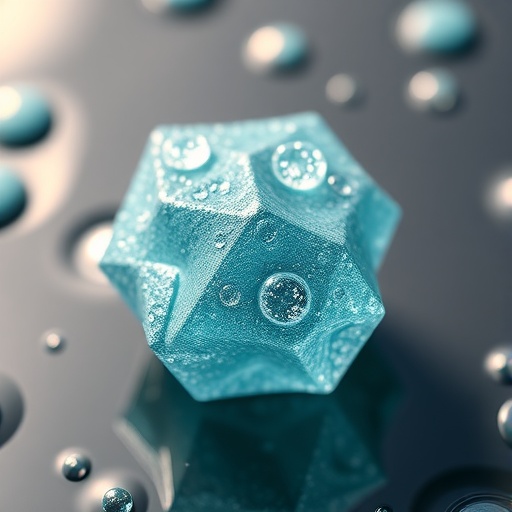In the relentless pursuit of sustainable and clean energy sources, hydrogen stands out as a beacon of hope, promising vast amounts of energy coupled with zero carbon emissions. However, the widescale deployment of hydrogen production technologies faces significant hurdles, notably in the availability of freshwater and the corrosive nature of seawater’s chloride ions. A pioneering research effort led by Assistant Professor Haeseong Jang from Chung-Ang University and Professor Xien Liu from Qingdao University of Science and Technology has forged a new path, unveiling an innovative ruthenium-based catalyst capable of efficient and durable hydrogen evolution directly from seawater. This advancement heralds a groundbreaking shift in clean energy generation, addressing one of the most critical challenges hampering green hydrogen’s scalability.
Traditional alkaline water electrolysis, while effective and environmentally friendly, remains tethered to the constraint of freshwater utilization, a resource that is becoming increasingly scarce and contested globally. Seawater electrolysis, in contrast, leverages Earth’s abundant oceanic reservoirs but imposes its own challenges due to the high concentration of chloride ions that aggressively corrode catalysts, undermining their longevity and performance. The imperative, therefore, has been to design catalysts capable of thriving in this hostile environment, performing hydrogen evolution reactions (HER) with efficiency and resilience.
Responding to this demand, the research team developed a ruthenium (Ru)-based nanocatalyst with a distinctive crystalline–amorphous heterostructure anchored on nitrogen-doped carbon. Their approach employed a g-C3N4-mediated pyrolysis strategy, which facilitated the formation of ultrafine Ru nanoclusters exhibiting exceptional dispersion and robust chloride resistance. During synthesis, g-C3N4 plays a dual role: serving as a nitrogen source and acting as a scaffold to coordinate Ru³⁺ ions. This coordination promotes in situ reduction of Ru³⁺ to metallic Ru nanoparticles under reductive gases released during pyrolysis, concurrently inducing structural disorder in the nanoparticle cores to form an amorphous phase juxtaposed with a crystalline surface, thus crafting a stable heterointerface.
This unique crystalline/amorphous heterostructure imparts a triad of pivotal advantages. Firstly, it promotes abundant active catalytic sites necessary for efficient HER. Secondly, it enhances charge transfer through optimized electron transport pathways. Finally, it establishes a protective barrier against chloride-induced corrosion, a notable vulnerability in conventional catalysts such as Pt or pure Ru. The nitrogen-doped carbon matrix additionally forestalls aggregation and oxidation of Ru nanoparticles, thereby bolstering catalyst stability.
Electrochemical evaluations of the a/c-Ru@NC catalyst revealed remarkable HER activity. In alkaline 1.0 M KOH, the catalyst exhibited a minuscule overpotential of merely 15 millivolts at a current density of 10 mA cm⁻², rivaling and surpassing many contemporary catalysts. Equally impressive was its durability, sustaining stable operation exceeding 250 hours without significant loss in activity. More compellingly, when subjected to simulated seawater conditions, the catalyst demonstrated extraordinary resilience with only an 8 mV performance drop and endurance over 100 hours—surpassing commercial Pt/C and Ru/C catalysts.
The development breaks new ground in the field of seawater electrolysis, primarily by integrating an architecture that simultaneously addresses catalytic activity, longevity, and resistance to chloride corrosion—factors that have previously inhibited commercial viability. The crystalline–amorphous interface facilitates synergies that optimize reaction kinetics while safeguarding structural integrity, and the nitrogen-doped carbon substrate further bolsters this dynamic. This molecular engineering feat opens the door to tapping the virtually limitless supply of ocean water for hydrogen production, freeing the technology from freshwater scarcity.
Beyond the immediate technical breakthrough, this work carries substantial economic implications. Professor Liu emphasizes that the catalyst exhibits a remarkable 37-fold increase in mass activity compared to commercial platinum catalysts, positioning it as a cost-effective alternative not only because of the ruthenium content reduction but also due to its scalable synthesis. This economic advantage is critical to fostering widespread hydrogen adoption in sectors such as transportation, industrial manufacturing, and power generation.
The environmental ramifications are also profound. By enabling direct seawater electrolysis, reliance on freshwater resources and fossil fuels diminishes significantly. This approach aligns with global decarbonization efforts, promising a reduction in air pollution and greenhouse gases. Furthermore, its scalability supports the establishment of large-scale green hydrogen infrastructures, crucial for transitioning energy grids and supply chains toward sustainability.
Dr. Jang articulates the broader vision of their innovation, underscoring its potential to accelerate climate change mitigation by providing robust clean hydrogen fuel. The catalyst’s endurance and efficiency pave the way for integrating hydrogen into diverse applications, including fuel cells and renewable energy storage, seamlessly blending with existing infrastructures while charting new pathways in energy science.
The study’s methodology reflects sophisticated materials engineering. The precise control over pyrolysis conditions and the utilization of g-C3N4 as a mediator exemplify how molecular-level design strategies can engineer nanostructures with finely tuned functionalities. The formation of a crystalline/amorphous boundary not only acts as a catalytic hot spot but also resists structural degradation—an elegant solution aligning with advanced principles in heterogeneous catalysis.
Ultimately, this research sets a benchmark for future endeavors in electrocatalysis and sustainable energy. By unlocking seawater’s potential and overcoming formidable corrosive challenges, it serves as a cornerstone in the quest for green hydrogen, opening avenues for cleaner economies and resilient energy systems worldwide. The scientific community and industry alike have much to celebrate as this catalyst edges closer to practical implementation, showcasing the transformative power of interdisciplinary innovation.
Subject of Research: Not applicable
Article Title: g-C3N4-Mediated Synthesis of Ru Crystalline/Amorphous Heterostructures on N-Doped Carbon for Efficient and Chloride-Resistant Alkaline HER
News Publication Date: 7-Aug-2025
References: DOI: 10.1002/adfm.202517551 (http://dx.doi.org/10.1002/adfm.202517551)
Image Credits: ca_heckler from Openverse
Keywords
Green energy, Sustainable energy, Green chemistry, Seawater, Electrical power generation, Water electrolysis, Hydrogen production, Fuel cells, Electrochemistry, Chemical engineering




